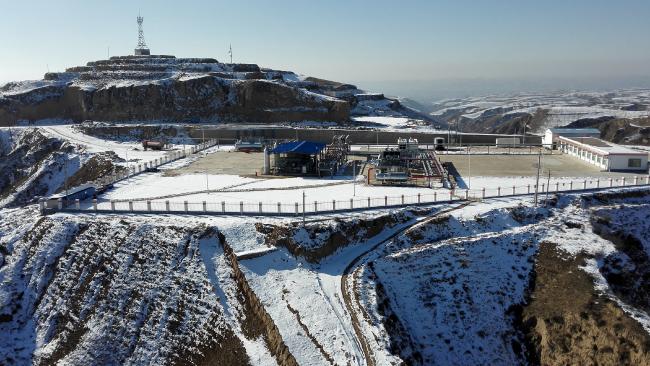Gas fields in the Ordos Basin, 500km from Beijing. China would require vast amounts of gas to help with the transition away from coal.
China’s latest half-a-trillion-dollar commitment to renewables will only boost the need for gas in the country, the only ASX-listed Chinese gas producer says.
China late last week announced plans for a massive new wave of investment in renewable energy as part of its efforts to ease the country’s chronic pollution problems.
Those plans should have a direct benefit on ASX-listed Sino Gas & Energy, the company’s Beijing-based managing director Glenn Corrie told The Australian, with China’s huge energy requirements meaning vast amounts of gas would be needed to help with the transition away from coal.
“The biggest issue the country faces at the moment is pollution,” Mr Corrie said. “There’s potential social instability problems due to the fact you’ve got very large populations in very polluted cities. As the population is getting wealthier and they’re travelling, they’re looking at this pollution and saying, ‘we don’t need to put up with this any longer’.”
China’s energy agency last week said the country would spend $US360 billion ($492.8bn) between now and 2020 on renewable energy sources such as solar and wind in the country’s latest attempt to ease the smog problems in Beijing and other Chinese cities.
The percentage of power generated by coal is also forecast to fall under the plan, while gas’s share of the Chinese energy market is expected to almost double from less than 6 per cent to 10 per cent.
The latest strategic plan also aims to increase gas exploration and development, prioritise the deregulation of the gas market, and promote gas for use in the power and transportation industries.
Sino Gas owns interests in the Linxing and Sanjiaobei gasfields in the Ordos Basin, about 500km from Beijing, making it one of the few foreign companies with direct exposure to China’s gas industry.
The company has already benefited from the Chinese government’s requirements for companies to turn to gas, with Sino now selling a large portion of its gas to a nearby aluminium refinery of state-owned giant Chinalco following an edict to convert the facility from coal to gas-fired power
The company and its partners have identified about 5 trillion cubic feet of gas, roughly equivalent to Woodside Petroleum’s Pluto gasfield off Western Australia, and Mr Corrie says the project has significant cost advantages in the Chinese market over the expensive liquefied natural gas projects of Australia and elsewhere.
Mr Corrie said Sino Gas could produce gas for about $2 a unit, compared to $7 to $8 a unit out of many LNG projects. The company has seen a lift in the amount of institutional investors on its share register in the past year, with big international names including Fidelity, Colonial First State, Kinetic and Perennial all taking positions in the company.
“We’re the lowest cost operator from a gas perspective, so that makes us a very attractive investment opportunity and is one of the reasons we’ve got some of the world’s biggest investment firms behind us,” Mr Corrie said.
Shares in Sino jumped 4.3 per cent to 12c yesterday, outpacing gains across the listed oil and gas space. The stock has now quadrupled in the past year.
Author: Paul Garvey
Article from: The Australian

